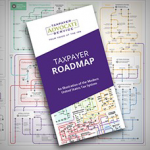Taxpayer Bill of Rights 2 (TBOR 2) brought about the Office of the Taxpayer Advocate.
TBOR 2 replaced the Office of the Taxpayer Ombudsman with the Office of the Taxpayer Advocate and brought the Taxpayer Advocate to the level of the IRS’s Chief Counsel. It gave the Advocate the authority and responsibility to make Congress aware of recurring, unresolved problems and difficulties taxpayers encounter in dealing with the IRS.
TBOR 2 described the functions of the Office of the Taxpayer Advocate:
- To assist taxpayers in resolving problems with the IRS;
- To identify areas in which taxpayers have problems in dealings with the IRS;
- To the extent possible, propose changes in administrative practices of the IRS to mitigate those identified problems; and
- To identify potential legislative changes that may help mitigate such problems.
The bill also replaced the original joint Assistant Commissioner/Taxpayer Advocate Report to Congress with two annual reports to Congress, issued directly and independently by the Taxpayer Advocate.
The first report, due by June 30, contains the objectives of the Taxpayer Advocate for the coming fiscal year (starting October 1). The second one, due by December 31, reports on activities of the Taxpayer Advocate during the fiscal year, including his or her initiatives to improve taxpayer services and IRS responsiveness, and a summary of at least 20 of the Most Serious Problems facing taxpayers.
TBOR 2 also amended IRC section 7811 to extend the scope of a Taxpayer Assistance Order by providing the Taxpayer Advocate with broader authority to take action and by setting a deadline for the IRS to act on the order.



